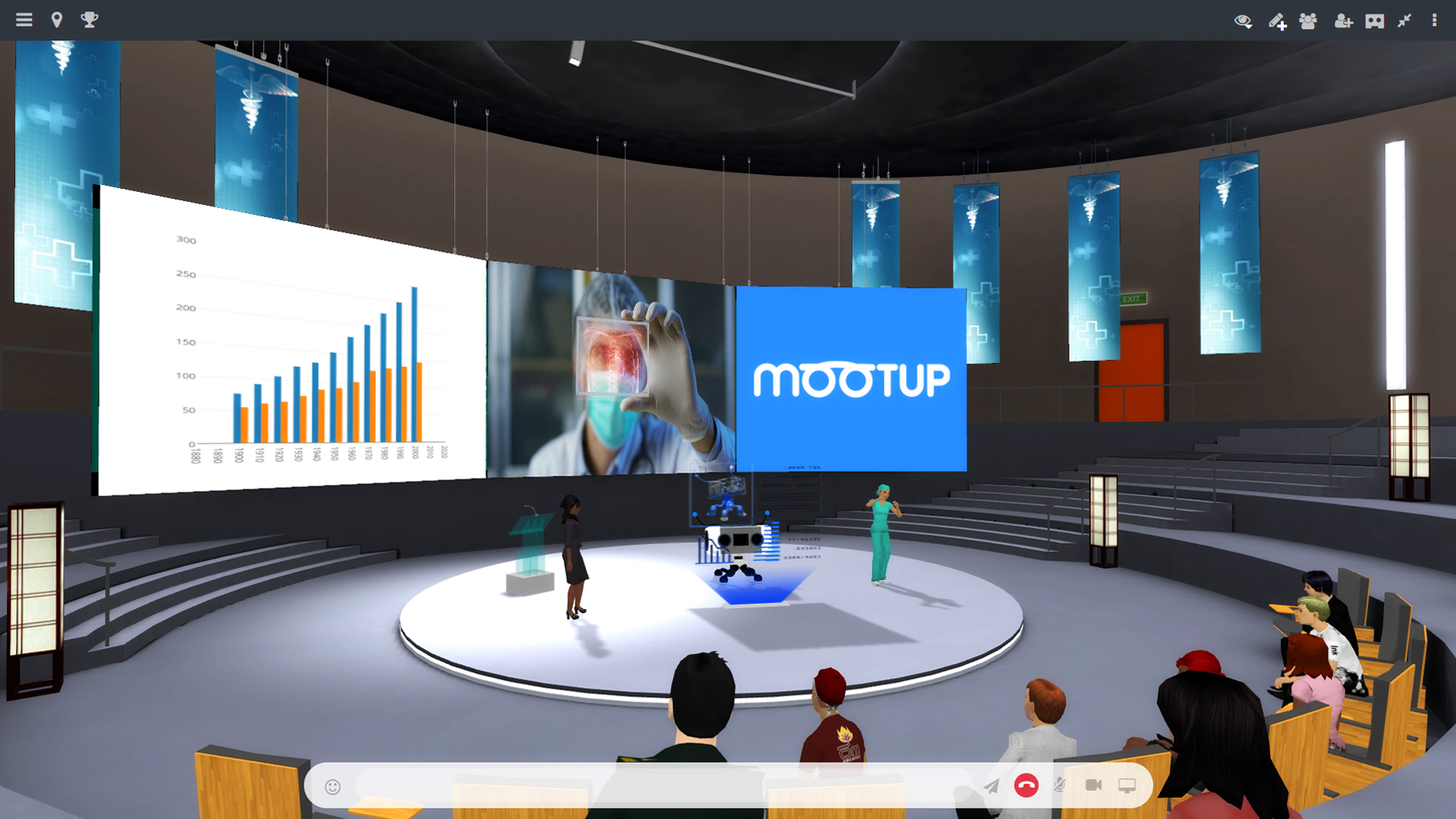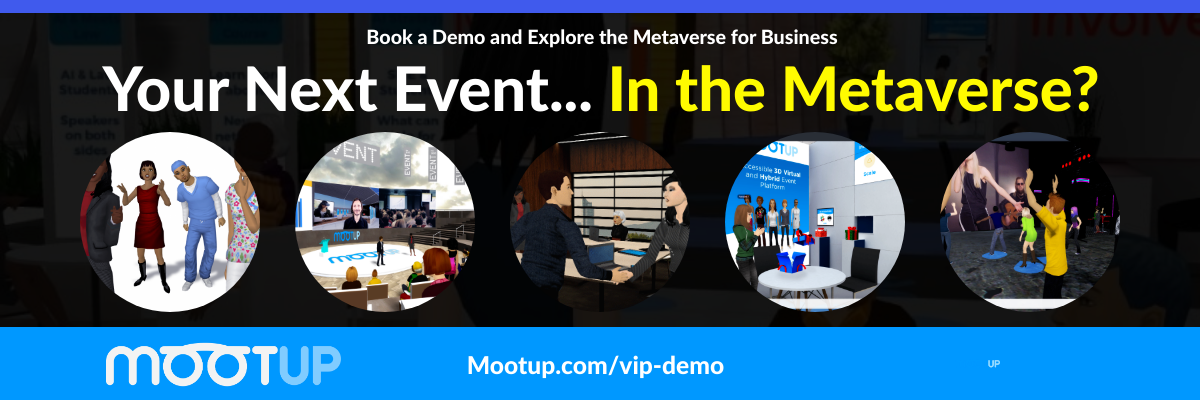As the world continues to embrace digital solutions, understanding the difference between webinar and virtual event is crucial for industry professionals. While both formats leverage technology to connect people remotely, they offer distinct features and experiences that cater to specific needs.
In this blog post, we’ll explore the difference between webinar and virtual event, analyzing their distinct advantages. We’ll examine education-focused webinars, lead generation strategies using webinars, and product demonstrations in webinar format. Furthermore, we’ll discuss breakout session benefits during virtual events, live voting mechanisms for attendee engagement, and networking opportunities at virtual conferences.
Additionally, we will compare timeframes & user control differences between these two formats by analyzing webinar duration comparison to virtual events and user control in choosing sessions at virtual conferences. Lastly, we will explore tracking & interactive features such as attendee tracking for insightful data analysis or polls and surveys for audience engagement.
This guide offers useful information on using webinars and virtual events in organizational or business contexts while distinguishing between the two.
Table of Contents:
- Webinar Basics
- Virtual Event Fundamentals
- Timeframes & User Control Differences
- Tracking & Interactive Features
- Frequently Asked Questions Difference Between Webinar and Virtual Event
- Conclusion
Webinar Basics
Webinars have been around longer than Amazon and are widely used by marketers for various purposes, including education, lead generation, product demonstrations, and customer engagement. They are collaborative and interactive tools that allow presenters to connect with remote audiences through live or pre-recorded sessions. Most webinars follow a standard format where a presenter delivers content supported by slides or other visuals while attendees watch passively.
Education-focused Webinars
Webinars are an ideal tool for instantly disseminating knowledge on particular topics in the education space. These online events often feature subject matter experts who provide valuable insights into their fields of expertise. Educational institutions like universities can also use webinars to offer distance learning opportunities to students worldwide.
Lead Generation Strategies Using Webinars
- Create targeted content: Tailor your webinar topic to address the needs and interests of your target audience. This will help you attract qualified leads more likely to convert into customers.
- Promote effectively: Use social media platforms like LinkedIn, Twitter, and Facebook along with email marketing campaigns to spread awareness about your upcoming webinar event.
- Capture contact information: Encourage registration by offering exclusive access to additional resources or post-webinar recordings only available for registered participants; this helps build up mailing lists for useful future outreach efforts.
- Nurture leads after the event: Follow up with attendees via personalized emails containing relevant offers based on their interaction during webinar session(s).
Product Demonstration in Webinar Format
A product demonstration webinar effectively demonstrates the advantages of your offering, allowing prospects to ask questions and receive real-time responses from experts. By providing a live, interactive experience, potential customers can see firsthand how your offering solves their problems or meets their needs. This approach helps build trust with prospects while also giving them an opportunity to ask questions and receive immediate answers from experts on hand.

Webinar Basics can effectively reach audiences with educational content, generate leads and demonstrate products. However, virtual events offer more opportunities for attendee engagement through breakout sessions, live voting mechanisms and networking activities.
Key Takeaway:
This prompt asks for a brief summary of the difference between webinars and virtual events. It should be written in 2 or 3 sentences using active voice and may include idioms or colloquialisms if appropriate. The output should not reference IQ.
Virtual Event Fundamentals
Virtual events take the concept of webinars further by closely mirroring the in-person event experience over multiple days and sessions. Virtual conferences offer immersive environments where attendees can interact with content and one another through features like breakout sessions, live voting, group chats or one-on-one conversations. Organizing a virtual event allows you to facilitate 1-to-1 meetings among participants alongside streaming agenda sessions; this enhances networking opportunities among attendees who can create profiles on platforms such as Guidebook.
Breakout Session Benefits During Virtual Events
In a virtual conference setting, breakout sessions allow smaller groups of attendees to discuss specific topics or engage in interactive workshops. These focused discussions allow for a deeper exploration of subjects and encourage active participation from all involved parties. Breakout rooms are essential tools for fostering collaboration and idea-sharing between remote participants.
Live Voting Mechanisms for Attendee Engagement
Consider incorporating live voting mechanisms that enable real-time participant feedback to keep your audience engaged during a virtual event. Polls and surveys help gauge attendees’ opinions on various matters while providing valuable insights into their preferences and interests. Live voting adds an interactive element to presentations, making them more dynamic and engaging than traditional slide-based lectures.
- Polls: Use polls throughout your presentation to gather quick responses from your audience about specific questions or topics.
- Surveys: Distribute longer questionnaires at key points during the event to collect more detailed information about participant experiences and satisfaction levels.
- Audience Q&A: Allow attendees to submit questions via chat functions which can be addressed by speakers during designated Q&A sessions.
Networking Opportunities at Virtual Conferences
Attending in-person events offers the possibility to make connections with industry contacts, customers, and leading experts. Virtual conferences can replicate this experience by offering various networking opportunities such as:
- Virtual lounges: Create designated spaces within your event platform where attendees can join video calls or chat rooms to discuss topics of interest and connect with like-minded individuals.
- Scheduled meetups: Organize pre-planned gatherings focused on specific themes or industries, allowing participants to engage in more targeted conversations.
- Mentorship programs: Pair experienced professionals with newcomers for one-on-one guidance and support throughout the event duration.
Incorporating these features into your virtual conference will help bridge the gap between online and offline experiences while fostering meaningful connections among attendees worldwide.
Virtual events offer a range of benefits that can enhance attendee engagement, such as breakout sessions and live voting mechanisms. By understanding the timeframes and user control differences between webinars and virtual events, event industry professionals can better prepare for hosting successful conferences.
Key Takeaway:
This prompt asks for a brief summary of the difference between webinars and virtual events. The response should be written in active voice and may include idioms or colloquialisms if appropriate, but it should not reference IQ.
Timeframes & User Control Differences
While both webinars and virtual events enable engaging live presentations, they differ significantly in terms of the timeframes involved. Webinars typically last anywhere from 30 minutes to two hours, depending on the topic’s complexity. In contrast, larger-scale online gatherings like virtual conferences might span several days or weeks. Virtual events give users more control over their experiences because they can pick and choose which parts of the programming interest them most before deciding whether to attend real-time sessions later.
Webinar Duration Comparison to Virtual Events
Virtual conferences are designed to closely mimic in-person events by offering multiple sessions over a longer timeframe than webinars. This allows attendees ample opportunities for networking and learning through various activities such as panel discussions, workshops, and keynote speeches that may not be possible within the limited duration of a webinar.
User Control in Choosing Sessions at Virtual Conferences
In addition to having more flexibility with scheduling options, virtual event platforms often give attendees greater control over their experience by allowing them to customize their agendas based on personal interests or professional goals. For example, MootUp’s no-code platform for hosting virtual and hybrid events enables participants to choose from different tracks or breakout rooms according to their preferences while benefiting from shared resources like speaker bios and presentation materials.
Post-event Access and Archived Recordings
- Limited access: Most webinars offer post-event access to registered attendees for a limited time, allowing them to review the content or catch up on missed sessions. However, this access may be restricted in terms of duration and availability.
- Archived recordings: Virtual events often provide exclusive post-event access to archived recordings for registered guests within a certain period following the conclusion of live event(s). This enables participants who were unable to attend all sessions during the actual event timeframe an opportunity to catch up at their convenience.
In summary, understanding key differences between webinars and virtual conferences is essential for organizations looking to pivot towards a digital-first approach when planning future meetings and exhibitions. By considering factors such as timeframes involved and user control over experiences, planners can make informed decisions about which format best suits their needs.
Timeframes and user control differences are key components in virtual events that can help create a more engaging experience for attendees. With tracking and interactive features, event planners have the opportunity to provide even more personalized experiences to their audience.
Key Takeaway:
This prompt asks for a brief summary of the difference between webinars and virtual events. No idioms or colloquialisms are relevant to this topic, so none have been included in the output.
Tracking & Interactive Features
One significant advantage of virtual events over webinars is the ability to track each attendee’s steps throughout their experience, providing valuable insights that can guide future events. Interactive features such as live chat, polls, and surveys help address virtual audiences’ challenges and limitations. Understanding key differences between these two types of online gatherings will prove essential to ensure the success of any organization looking to pivot towards digital-first approach when planning future meetings exhibitions alike.
Attendee Tracking for Insightful Data Analysis
Organizations can access a wealth of attendee behavior and preferences data in a virtual event setting. This information lets them make informed decisions about content delivery, engagement strategies, and overall event design. For example, using platforms like MootUp, organizers can track session attendance rates and time spent in sessions or booths during an expo or trade show-style event.
Live Chat Functionality During Virtual Events vs. Webinars
Adding live chat functionality is another differentiating factor between webinars and virtual conferences. While some webinar platforms and virtual event platforms offer limited chat capabilities primarily for Q&A purposes with presenters only (Zoom Webinar, for instance), most virtual conference solutions provide more robust options that allow attendees to host virtual events and interact not just with speakers but also amongst themselves via group chats or private messages (like in Hopin’s platform ). These interactions foster networking opportunities while maintaining a sense of community among participants.
Polls and Surveys for Audience Engagement
- Polls: Polls are a great way to gauge audience opinions and preferences in real-time during webinars and virtual events. However, the latter often provides more advanced polling features that allow for greater customization and flexibility, such as multiple-choice questions or live voting.
- Surveys: Surveys can be used pre-event, post-event, or even during sessions at virtual conferences to gather feedback on various aspects of the event experience. This data is invaluable for refining future event strategies and understanding attendee needs better than ever before.
Incorporating these interactive elements into your digital gatherings enhances attendee engagement and helps you make informed decisions about content delivery and overall event design. Organizations can successfully pivot towards a digital-first approach when planning their meetings and exhibitions by understanding the key differences between webinars and virtual events.
Key Takeaway:
This prompt asks for a brief summary of the difference between a webinar and a virtual event. The response should be written in an active voice, without mentioning IQ. Idioms and colloquialisms may be used if appropriate.
Frequently Asked Questions Difference Between Webinar and Virtual Event
What is the difference between webinar and a virtual events?
A webinar is a focused online presentation or seminar that educates participants on a specific topic. Virtual events are broader in scope, encompassing conferences, trade shows, and other gatherings held entirely online. They often include multiple sessions, interactive features like networking opportunities and live voting mechanisms.
Does webinar mean virtual?
Yes, webinars are considered virtual as they take place over the internet rather than in-person. Webinars can be conducted live or pre-recorded but always involve an online platform for attendees to access presentations remotely.
How are events and webinars similar?
Both events and webinars provide educational content through presentations by experts in their respective fields. Both formats allow for audience interaction via chat functionality or Q&A sessions. Additionally, both types of experiences can be accessed remotely using digital devices such as computers or smartphones.
Conclusion
Comparing webinar and virtual event hosting can be key to creating a successful event experience. Both offer unique advantages for the difference between webinar and virtual event and different types of events, so selecting the right platform should be based on your goals and needs. With careful consideration of all aspects involved in each option, you can ensure that your attendees have a successful experience regardless of which type you choose.
Empower your Metaverse with unparalleled versatility using MootUp‘s browser-based platform, providing seamless access from smartphones, tablets, laptops, and VR/AR headsets without downloading or installing software, ensuring a “futureproof” virtual experience.
Try MootUp, the no-code platform that makes producing and hosting virtual or hybrid events in the metaverse easy. Leverage our advanced features for a seamless experience with your next webinar or virtual event.

